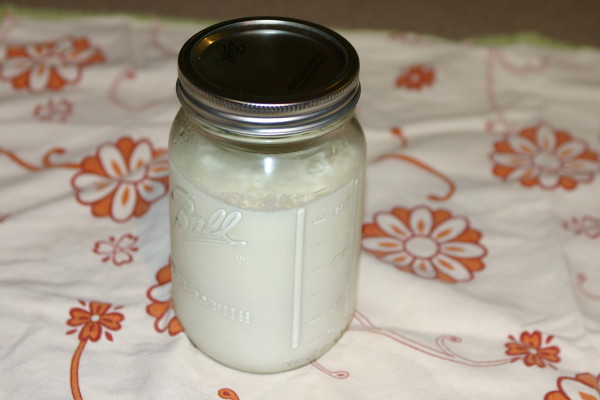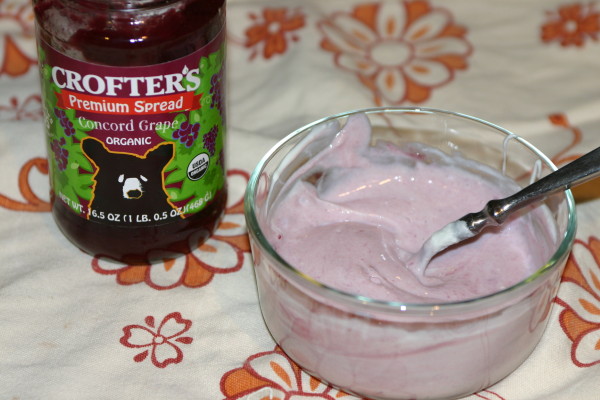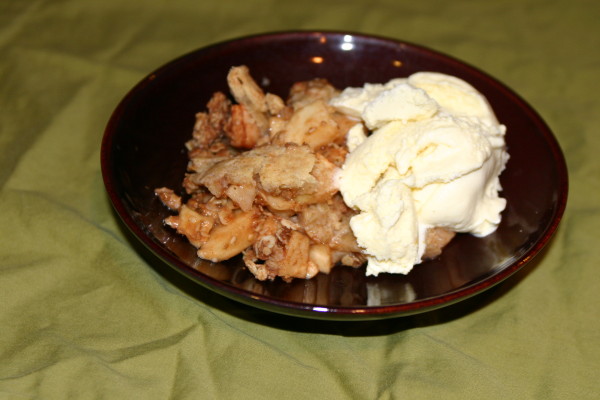My husband and my son are huge yogurt lovers. Unfortunately, most yogurt comes in individually-sized plastic containers. These containers are bad for the environment and bad for your health. It doesn’t make much sense to me that companies put organic yogurt into plastic containers, which can leach toxins into the yogurt and totally cancel out the organic benefits.
Stonyfield Farm recently changed their polystyrene yogurt cups to cups made out of PLA (the same stuff that the SunChips began making their bags out of). PLA, or polylactic acid, is made from plants, usually corn. But PLA comes with its own problems:
- Growing corn is harmful to the environment.
- Like conventional plastics, PLA contains harmful additives that can leach into the yogurt.
- PLA cannot be recycled.
For more information about Stonyfield Farm containers and PLA, check out the post on My Plastic Free Life.
We are fortunate that our local Whole Foods carries a yummy brand of organic yogurt in big glass bottles. I would love it even more if the bottles were returnable (like our milk bottles) and if it was a little cheaper. So I began to do some research on making my own yogurt. The idea kept popping up in some of the magazines and blogs that I read. I gave it a shot and it turned out to be super easy and really good! We are saving some money, and we are getting the satisfaction of knowing that we are eating something we made ourselves.
Recipe for Homemade Organic Yogurt
Here are the ingredients you need to make your own yogurt:
- 4 cups organic milk (I used 2% but anything would work)
- 1/2 cup organic dry milk powder (I think I might decrease this to 1/4 cup next time because it was too thick for my husband)
- 2 tbsp. plain organic yogurt with active cultures (or you can use powdered culture)
- 1/4 cup honey (or any other sweetener or no sweetener at all)
And here are the directions for making the yogurt:
- Combine milk and milk powder in a medium saucepan and heat to 180 degrees, stirring occasionally. Use a candy thermometer to monitor the temperature.
- Stir in honey or other sweetener (optional). You can also try adding 1 tbsp. extract (such as vanilla, peppermint, almond or coconut), 1 tbsp. instant coffee, or 1 tsp. ground spices (such as cinnamon, nutmeg, or ginger). These ingredients can also be added after the yogurt is done.
- Remove pan from heat and let cool to 110 degrees.
- Put the 2 tbsp. yogurt in a small bowl and whisk about a 1/2 cup of the cooled milk into it until blended.
- Pour the yogurt/milk mixture back into the cooled milk pan and whisk until blended.
- Pour the mixture into a clean Mason jar(s) or into a glass Pyrex container.
- Place jar or container in an oven with just the oven light on and let sit for at least 8 hours. Or you can place the jar or container on a heating pad set to low with a large soup pot turned upside-down and over it.
- Add fresh, canned or dried fruit (if desired) and enjoy!
I put my yogurt into two different Mason jars and placed them in the oven with just the light on. I left them overnight and they turned out perfect! If the yogurt doesn’t firm up, it may be that the cultures weren’t active.
Uses for the Yogurt
The yogurt is great on its own, or you can add any combination of fruits, spices, or jam. Every morning I took about a half cup of the yogurt and added a different mix-in. Here is a list of some of our uses for the homemade yogurt:
- Yogurt mixed with mashed banana
- Yogurt mixed with mashed banana and vanilla extract (make your own vanilla extract)
- Yogurt mixed with blueberry sauce
- Yogurt mixed with strawberry jam
- Yogurt mixed with grape jam (my son’s request)
- Yogurt mixed with cinnamon and nutmeg
- Smoothie with strawberry, banana, wheat germ, orange juice and ice
- Smoothie with banana, pineapple, coconut and milk
- Vanilla frozen yogurt
- Regular yogurt served with homemade granola
- Frozen yogurt served with homemade apple crumb pie



